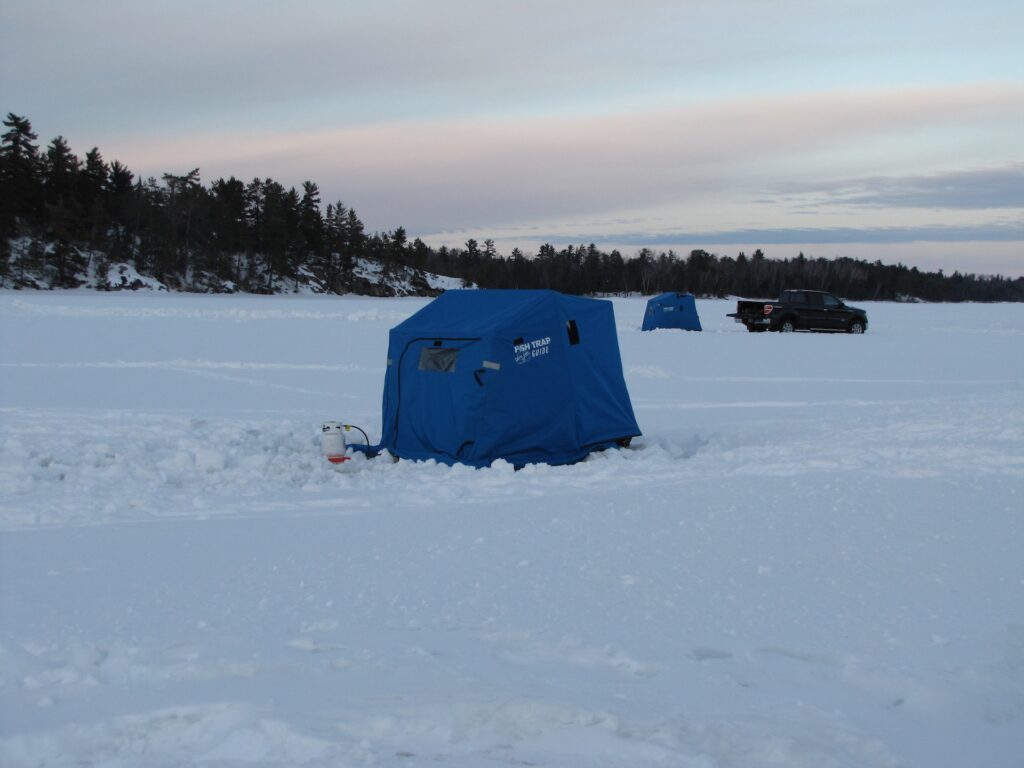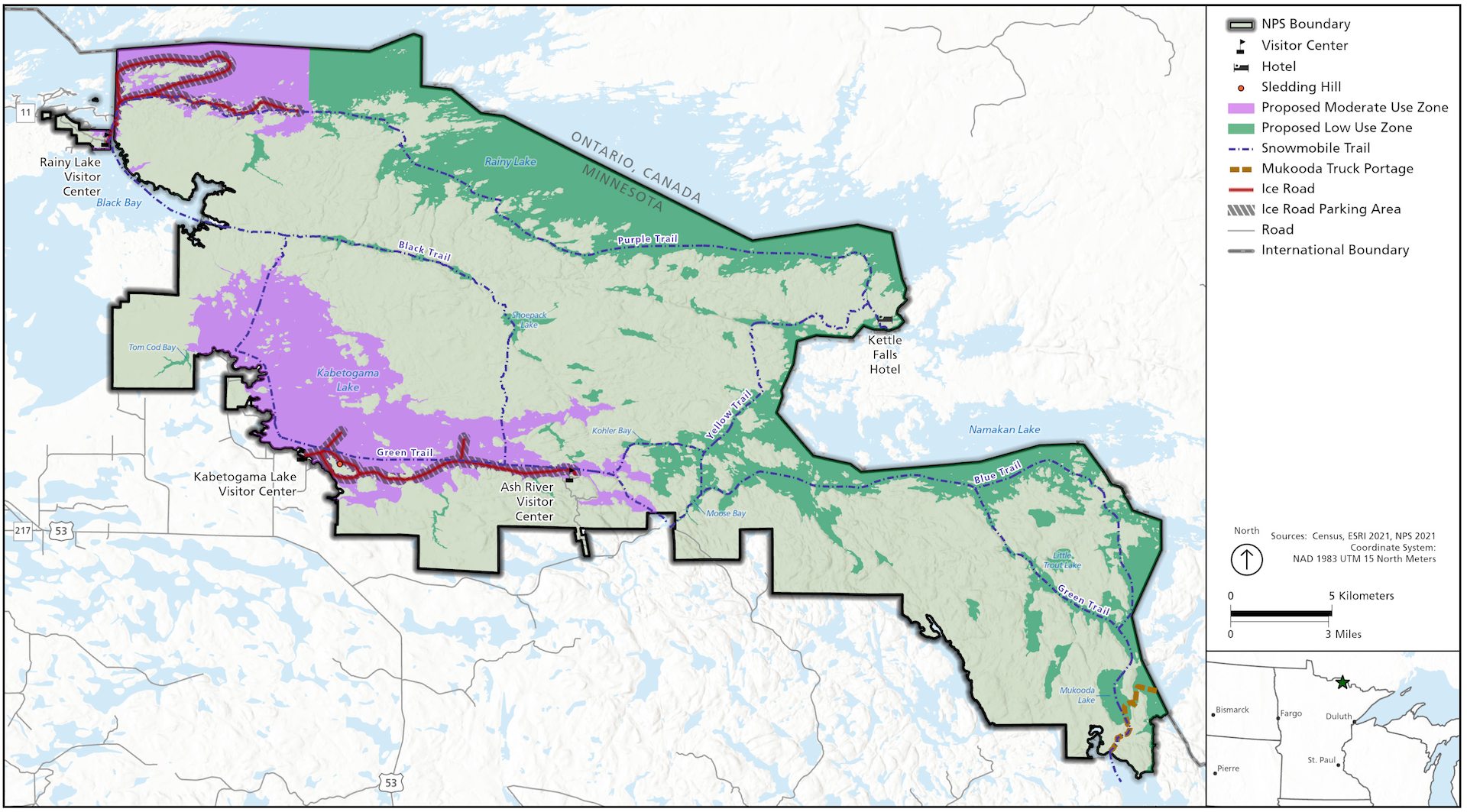
The National Park Service has released a preliminary proposal for managing ice roads and the vehicles that generally use them, seeking to conform to federal policy. With changes in technology and trends in outdoor recreation, the agency says it is necessary to take a comprehensive look at the issues.
National Park Service staff have been plowing and maintaining ice roads on Rainy and Kabetogama Lakes every winter since the park was founded in 1971. The practice is seen as continuing long-standing tradition, and providing access to the park for more people. The park also includes several maintained snowmobile trails, which are managed under long-standing agreements, and snowmobile use is not part of the latest planning process.
With the rise of ATVs, side-by-side UTVs, off-road capable trucks, and even new types of ice fishing shelters, the park says it needs to develop guidelines for its activities and visitors.

“On portions of Rainy and Kabetogama Lakes, visitors also access the frozen lake area with [off-road vehicles on areas away from established ice roads, which is contradictory to federal regulations,” the Park Service says.
The plan is still in its earliest stages, with a full public review process ahead. The National Park Service is seeking public comments through May 3. It will also host three public meetings, two local and one virtual, for citizens to share thoughts and concerns.
Essentially, the park is proposing two zones of management for frozen lake usage in the park. On all of Kabetogama Lake and the western part of Rainy Lake, ice roads would be maintained and off-road vehicles and ice-fishing shelters would be allowed in a corridor along up to 26 miles of ice roads. All other lakes in the park would be left roadless and accessible by snowmobiles according to the current management plan, or by non-motorized travel.

Off-road vehicles would then be allowed to operate within 300 feet of the edge of an ice road, where ice fishing shelters also will also be allowed. The park says new types of shelters have also complicated management in recent years, as they “have evolved from homemade shacks to campers that can be lowered onto the ice.”
The planning process the park is following provides for two more opportunities for public input. Information gathered during this phase will be used to develop alternative proposals that will be the subject of future feedback.
Submit comments electronically at https://parkplanning.nps.gov/VOYA-frozen, or via US Mail to Frozen Lake Surface Access and Use Plan, Voyageurs National Park, 360 Hwy 11 East, International Falls, MN 56649. The following public meetings are also scheduled to accept public input: April 18, Kabetogama; April 19 online; and April 20, International Falls. Comments are due by May 3.

